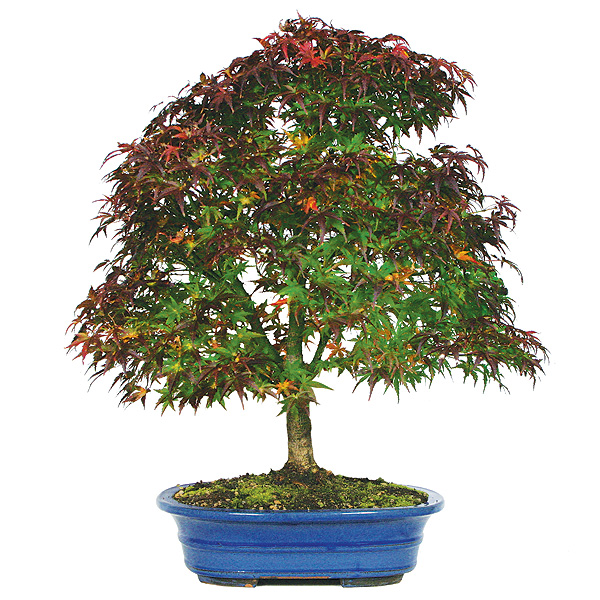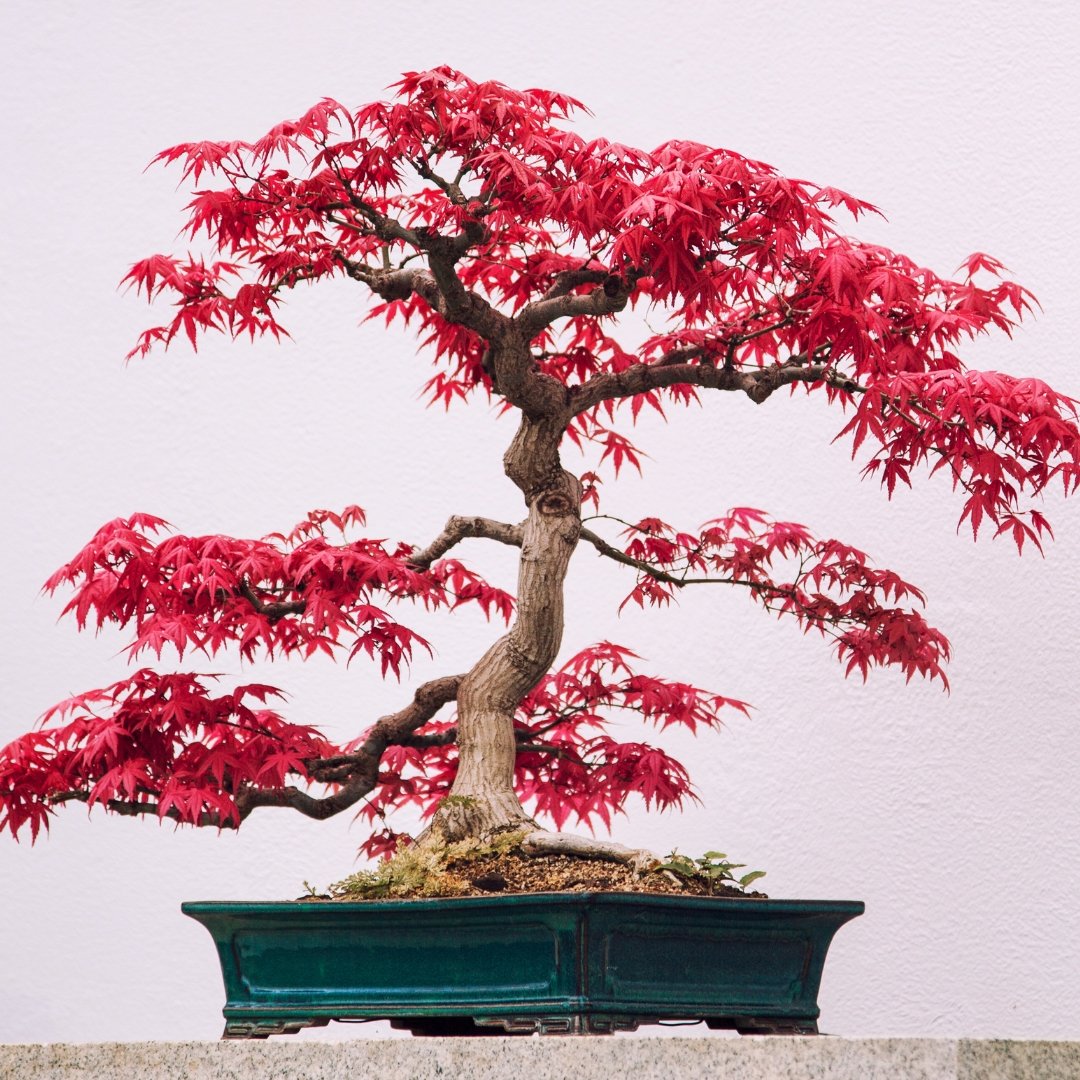Vine Maple bonsai trees require regular watering and indirect sunlight for optimal growth. Prune and shape to maintain their structure.
Vine Maple bonsai trees are a beautiful addition to any garden or indoor space. Known for their stunning foliage, these trees thrive with regular care. Ensure they receive indirect sunlight and consistent watering. Pruning helps maintain their shape and encourages healthy growth.
Use well-draining soil to prevent root rot. Fertilize during the growing season to boost vitality. Protect from extreme temperatures and harsh winds. Regularly check for pests and diseases. With proper attention, Vine Maple bonsai trees can flourish and add elegance to your space. Their vibrant leaves bring a touch of nature indoors, creating a serene atmosphere.

Credit: www.bonsaioutlet.com
Choosing The Right Vine Maple
Selecting the ideal Vine Maple for bonsai requires careful consideration of climate and care needs. Opt for healthy specimens with vibrant foliage and strong branches.
Selecting Healthy Saplings
Pick saplings with bright green leaves. Avoid yellow or brown leaves. Check the roots. Strong roots are crucial for growth. No broken or damaged roots should be visible. Look for a sturdy trunk. A strong trunk supports the tree well. Ensure there are no pests. Healthy saplings are pest-free.
Ideal Varieties
Some varieties are better for bonsai. Consider the Acer circinatum. This is a popular choice. Acer palmatum is another good option. Both adapt well to shaping. They also have beautiful leaves. Pick a variety that suits your climate. Check local nurseries for advice. Happy growing!
Planting Essentials
Caring for a Vine Maple Bonsai Tree involves regular pruning, proper watering, and ensuring adequate sunlight. This beautiful bonsai thrives in well-drained soil and requires occasional fertilization to maintain its health and vigor. Regular attention helps in shaping and promoting the tree’s growth.
Soil Requirements
The right soil is very important. Well-draining soil keeps roots healthy. Use soil with organic matter for nutrients. Avoid heavy clay soil. It can hold too much water. Mixtures with pine bark or lava rock work well. This keeps the roots from rotting.
Pot Selection
Choosing the right pot is crucial. Shallow pots are best for bonsai trees. They help control root growth. The pot should have drainage holes. This prevents water from sitting at the bottom. Ceramic pots are a popular choice. They are both functional and beautiful. Make sure the pot size matches the tree size. A small pot for a small tree and a larger pot for a bigger tree.
Watering Practices
Proper watering practices ensure the health of your Vine Maple Bonsai. Maintain moist soil without overwatering to avoid root rot. Adjust watering frequency based on seasonal changes and soil condition.
Optimal Frequency
Water the Vine Maple bonsai tree once the topsoil feels dry. Check the soil with your finger. Aim for a consistent watering schedule. Too much water can harm the roots. Too little water can dry out the leaves. Balance is key for healthy growth.
Signs Of Overwatering
Yellow leaves are a sign of overwatering. Mushy roots also indicate too much water. Soil that stays wet for days can cause problems. Fungal growth on the soil surface is another sign. Check for a sour smell in the soil. Reduce watering if you notice these signs.

Credit: bonsai-en.shop
Pruning Techniques
Use small, sharp scissors for shaping. Trim only a little at a time. Always cut just above a leaf node. This helps new branches grow better. Regular trimming keeps the shape neat. Focus on removing weak or dead branches. These do not help the tree. Create a balanced shape by trimming all sides equally. Patience is key in shaping.
Spring is the best time for heavy pruning. The tree grows quickly then. Cut back large branches now. Summer requires light trimming only. The tree needs to stay full for photosynthesis. Fall pruning helps prepare the tree for winter. Remove any weak or damaged branches. Winter is for minimal pruning. Trees are dormant and need rest.
Fertilizing Schedule
Use a balanced, slow-release fertilizer. Organic fertilizers are best for Vine Maple Bonsai trees. They provide steady nutrients. Fish emulsion is a good choice. Bone meal can also be used. Avoid chemical fertilizers.
Apply fertilizer once in spring. Fertilize again in early summer. Do not fertilize in winter. Over-fertilizing can harm the tree. Always follow the instructions on the package. Water the tree after fertilizing.
Pest And Disease Management
Aphids and spider mites can harm your Vine Maple Bonsai. Powdery mildew and root rot are also common. These problems weaken the tree. Leaves may turn yellow or drop early. Always check your bonsai for any signs of trouble. Quick action is key to keeping your tree healthy.
Keep your bonsai clean and well-trimmed. This helps prevent pests. Use a mild insecticidal soap to treat any pests you find. Good air circulation around the tree is important. Avoid over-watering to prevent root rot. A well-draining soil mix is best. Regularly inspect the tree for any signs of disease.
Repotting Process
The best time to repot a Vine Maple Bonsai is in early spring. The tree is still dormant during this period. This timing helps reduce stress on the tree.
- Prepare a new pot with fresh soil.
- Gently remove the tree from its current pot.
- Trim the roots, removing about one-third.
- Place the tree in the new pot.
- Add fresh soil around the roots.
- Water the tree thoroughly.
- Place the bonsai in a shady spot for a few weeks.
:max_bytes(150000):strip_icc()/growing-japanese-maple-bonsai-5085314_02-d3f41f2a659e4d1ba5d1eb2b53978277.jpg)
Credit: www.thespruce.com
Climate Considerations
The Vine Maple Bonsai can handle both cool and warm climates. This tree grows best in temperatures between 60°F and 75°F. Extreme heat can damage the leaves. In winter, it should be protected from freezing temperatures. A temperature range of 40°F to 50°F is ideal during dormancy.
Proper humidity is important for Vine Maple Bonsai. It prefers moderate to high humidity levels. Too much dryness can lead to leaf drop. Misting the leaves helps to maintain humidity. You can also place a humidity tray under the pot. This helps to keep the air around the tree moist.
Conclusion
Caring for a Vine Maple bonsai tree is rewarding and enjoyable. Follow these tips for a healthy bonsai. Regular pruning, proper watering, and suitable soil ensure vibrant growth. With patience and dedication, your Vine Maple bonsai will thrive and become a beautiful addition to your collection.
Happy gardening!

